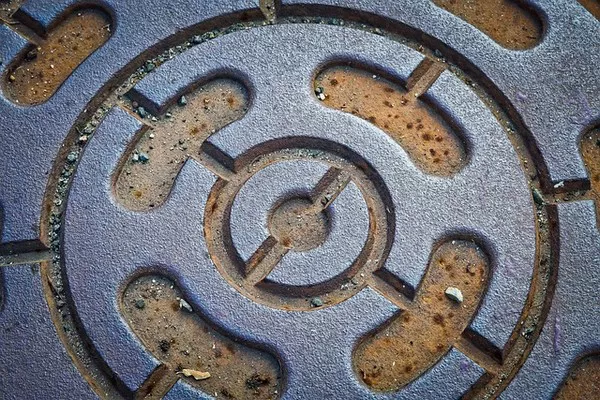Municipal sewage, often referred to as wastewater or sewage, is a significant aspect of urban infrastructure that plays a critical role in maintaining public health, environmental sustainability, and overall quality of life. As urbanization continues to rise globally, understanding municipal sewage and its management becomes increasingly vital. This article provides a comprehensive overview of municipal sewage, including its composition, sources, treatment processes, challenges, and the importance of effective sewage management.
Composition of Municipal Sewage
Municipal sewage is a complex mixture of liquid and solid waste originating from various sources within urban areas. Its composition encompasses domestic, commercial, and industrial wastewater, along with stormwater runoff from streets and other surfaces. This diverse blend includes:
Domestic Wastewater: Generated from households, this category encompasses water from kitchens, bathrooms, laundry, and toilets. It contains human waste, food particles, soap, detergents, and other household chemicals.
Commercial Wastewater: This category includes wastewater from offices, shops, restaurants, and other businesses. It may contain pollutants such as grease, oil, and chemicals specific to commercial activities.
Industrial Wastewater: Generated by manufacturing processes, industrial wastewater can carry a range of pollutants including heavy metals, solvents, and toxic chemicals. Its composition varies widely depending on the industry.
Stormwater Runoff: During rain events, stormwater washes over streets, parking lots, and other surfaces, collecting pollutants like oil, pesticides, and debris before entering the sewage system.
Sources of Municipal Sewage
The sources of municipal sewage are directly tied to human activities within urban areas. The quantity and characteristics of sewage generated vary based on factors such as population density, urban infrastructure, and local industries. Rapid urbanization leads to increased sewage production due to higher populations and intensified industrial activities. Moreover, seasonal variations and climate conditions can influence the volume and composition of sewage generated.
Treatment Processes for Municipal Sewage
To mitigate the adverse impacts of sewage on public health and the environment, effective treatment processes are imperative. The treatment of municipal sewage typically involves several stages:
1. Preliminary Treatment:
In this phase, large debris and solid objects are removed using screens and grit chambers. This prevents damage to downstream equipment and facilitates subsequent treatment processes.
2. Primary Treatment:
During primary treatment, the sewage is settled in large tanks to allow heavier solids to settle at the bottom as sludge, while lighter materials form a scum layer on top. The partially treated water, known as effluent, is then discharged to secondary treatment units.
3. Secondary Treatment:
Also known as biological treatment, this phase involves the use of microorganisms to break down organic matter in the sewage. Aeration tanks or lagoons provide an environment where bacteria and other microorganisms consume organic substances, converting them into carbon dioxide, water, and more microorganisms. This significantly reduces the organic load in the sewage.
4. Tertiary Treatment:
Tertiary treatment, which is not always included in all sewage treatment plants, further refines the effluent to remove remaining pollutants, nutrients (like nitrogen and phosphorus), and pathogens. This can involve advanced filtration, chemical treatments, and disinfection.
5. Sludge Treatment:
The sludge generated during primary and secondary treatment is treated separately. Common methods include digestion, where microorganisms break down the sludge, and dewatering, which reduces the volume of sludge by removing excess water. The treated sludge can be used for agricultural purposes or disposed of in a controlled manner.
Challenges in Municipal Sewage Management
Despite the advancements in sewage treatment technology, several challenges persist:
Aging Infrastructure: Many urban areas have outdated sewage systems that are unable to handle the increasing volumes of wastewater. This can lead to overflows, backups, and water pollution incidents.
Population Growth: Rapid population growth can strain existing sewage treatment facilities and result in inadequate treatment, leading to pollution of water bodies and potential health risks.
Industrial Pollution: Industrial wastewater often contains complex pollutants that can challenge conventional treatment processes. Effluents from certain industries may require specialized treatment techniques.
Limited Resources: Developing effective sewage treatment infrastructure requires substantial financial investments and technical expertise. Many municipalities struggle to allocate sufficient resources to address sewage management adequately.
Environmental Impact: Poorly treated or untreated sewage can lead to contamination of water bodies, soil, and air, harming aquatic life and ecosystems and posing health risks to humans.
Importance of Effective Sewage Management
Proper sewage management is essential for various reasons:
Public Health: Inadequate sewage treatment can lead to the spread of waterborne diseases such as cholera, typhoid, and hepatitis. Effective treatment safeguards public health by reducing the presence of pathogens in water bodies.
Environmental Conservation: Untreated sewage can degrade water quality, harm aquatic life, and disrupt ecosystems. Proper treatment minimizes the negative impact on the environment, preserving biodiversity and ecological balance.
Resource Recovery: Sewage treatment can result in valuable byproducts. Treated wastewater can be reclaimed for non-potable uses like irrigation and industrial processes. Additionally, the sludge produced can be converted into nutrient-rich fertilizers.
Regulatory Compliance: Many countries have regulations and standards in place to govern sewage management practices. Adhering to these regulations ensures that municipalities operate within legal and ethical boundaries.
Conclusion
Municipal sewage management is a critical aspect of modern urban living that directly impacts public health, the environment, and overall quality of life. Understanding the composition, sources, treatment processes, challenges, and importance of effective sewage management is essential for creating sustainable and healthy urban environments. As urbanization continues to evolve, investing in advanced sewage treatment technologies, updating infrastructure, and promoting responsible sewage practices become imperative to ensure the well-being of current and future generations.

